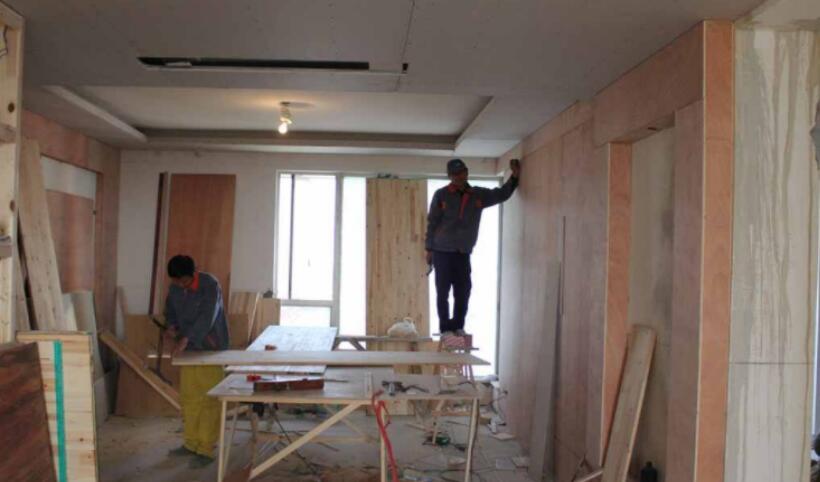巴黎必吃美食推荐语英文(巴黎必吃美食推荐语英文怎么说)
今天给各位分享巴黎必吃美食推荐语英文的知识,其中也会对巴黎必吃美食推荐语英文怎么说进行解释,如果能碰巧解决你现在面临的问题,别忘了关注本站,现在开始吧!
澳门的朋友,麻烦来点澳门地道美食推荐
澳门美食小吃太多,比如蛋糕仔、猪扒包、木糠布丁、榴莲雪糕、水蟹粥、杏仁饼、老婆饼、蛋卷、葡国血鸭 、葡国鸡 、葡挞、马介休球等,这些大部分在小吃街或者有很多好的打卡地。
还是告诉你几家不错的澳门美食餐厅吧,自己去吃就可以了。
澳门美食餐厅
1.帝濠轩澳门必吃美食餐厅,荣获2019年大众点评必榜,有早茶、海鲜、粤菜、火锅等美食提供,出品组合灵活多变,糅合和改良不同地方的菜式。环境:有传统中式酒楼龙凤礼堂, 亦有简约清雅的西式布置为主题,环境优雅!
2.顺轩有中,西,日,三家不同元素的现代化餐厅。顺轩以岭南传统顺德菜、海鲜火锅、精品粤式点心为主的高端中式宴客餐厅。西餐厅(丰收台)和日式料理(御瀛),就在旁边,非常nice!
3.忠成饺子王
澳门一定要去吃的东北餐厅。以东北特色为主调,汇聚东北美食精髓,精心烹制的地方料理。特色菜系:东北水饺,川菜美食,山西面食。而水饺更是从水饺馅料准备到饺皮制作,再到烹饪调味,均以纯手工打造。
用英语描述5种巴黎的美食
baguette 法式长棍面包 CROISSANT 羊角 面包 Macaroon杏仁小圆饼 French fried f oie gras roll法式香酥鹅肝卷 Crepes可丽 饼
巴黎里的美食有哪些,要中文也要英文
可丽饼
可丽饼是法国的传统小吃,基本上有咸、甜两种口味。如果你到传统可丽饼小摊点餐,主餐就是咸可丽饼,甜点就是甜可丽饼,饮料当然是配上最有地方色彩的苹果酒。可丽饼的材料相当简单,饼皮不外是面粉、水、鸡蛋和奶油,有的还加入少许啤酒酵母增添香气。
帕尼尼
帕尼尼这种长条形的意大利三明治是意大利人继披萨之后,征服挑嘴的法国人的另一项简便轻食。它是一条长形的白面包夹馅,和法国长棍面包做的三明治有点像。馅料选择也不少,想吃清淡一点的,可以点马兹瑞拉起司夹西红柿。肉食主义者的选择从牛肉、鸡肉、羊肉、烟熏腊肠到类似麦当劳的煎牛肉饼都应有尽
卡苏莱cassoulet
卡苏莱相传是英法百年战争的时候,受困的居民把仅剩的材料全放入锅里炖煮意外发现的美味。一时间,卡苏莱的香味弥漫全城,振奋人心。这是一道主要用鸭腿香肠大白扁豆等炖煮的农家菜,后来在法国料理大师们的精心烹调下变为丰富多彩的美味佳肴。
奶酪火锅
传统的萨瓦火锅是用高山奶酪配以白酒在锅中煮沸,直到奶酪完全溶解,就可以用面包片蘸着香浓的火锅汤开始大快朵颐了。不同的地区会用不同的奶酪来制作这道法式名菜,因此在法国各地您都能品尝到地道的却又味道各异的奶酪火锅。
法式蜗牛
法国蜗牛是法国著名的菜肴,要烹制好它可不是一件容易的事。法国人每年大约要食用3500吨的蜗牛,在重大的节日里,特别是在圣诞节,蜗牛更是不可缺少的菜式。
马卡龙
马卡龙作为法式点心的代表,拥有酥松的外皮和柔滑的内里。而且处在一片甜腻过头的甜品中,绝大部分的马卡龙还算是谁都能接受的甜度,热量也可以包容。如果喜爱甜品的话,务必请试一试。
法国美食英文简介!
French Food Culture
Culture of French Food
French cuisine is extremely diverse, with only the Chinese having similar variety in their food. This variety is supported by the French passion for good food in all its forms, France's extraordinary range of different geographies and climates which support the local production of all types of ingredients, and France's long and varied history. In many ways, an understanding of the culture of French food is an understanding of France itself.
Meals range from the very basic, such as the traditional baguette plus cheese plus inexpensive wine, to very elaborate affairs than can involve a dozen courses and different wines consumed over several hours. Obviously, the latter type of dining is exceptional for most people. However, it is this more sophisticated dining which is typically found in "French restaurants" outside France, giving many foreigners the mistaken impression that French food is heavy and complicated. In fact, much of the French cuisine is fairly simple, relying on high quality fresh ingredients and loving preparation rather than complex recipes.
It is common in much of France to take a two hour break for lunch, with many working parents (particularly in villages and smaller towns) returning home for lunch. In some areas, mainly in the south of France, even longer lunch breaks are taken. Due to the long lunch break, businesses which close for this period typically reopen around 2PM or so and then stay open until about 7PM.
Regional influences on French food
Almost all the famous French dishes are regional specialities, some of which have become popular throughout France (such as Coq au Vin and Foie Gras) while others are mainly enjoyed in the regions in which they originate. Although regional specialities are often offered throughout France, the quality of ingredients and preparation is often superior in their region of origin.
Each region, in addition to boasting local specialities, also has a general style of cooking and choice of ingredients. For example, in Provence the food typically features olive oil, herbs and tomatoes. The evolution of regional cooking styles has been influenced by:
Local availability. The French, a nation of gourmets, know that the best food is made from local ingredients, which are fresher and of better quality than items which have been transported long distances. Consequently, coastal regions (such as Brittany and Normandy, on the northwest coast of France) will favour sea fish and will use it more often and in more varied ways than inland areas. Likewise, areas where fruit or herbs grow easily, will incorporate these into their local cuisine.
Neighbouring countries and immigration. Areas of France which border on other countries have incorporated some of the cuisine of their neighbours. It is not surprising to find Italian dishes near the Italian border. More notably, the French region of Alsace is similar to Germany in its food (sauerkraut is popular) and wine, partly due to it currently bordering on Germany and partly due to it having been part of Germany at various points in its history (the border has moved back and forth with various wars). In parts of the south which have a large North African immigrant population one can enjoy the cuisine which they have imported from their original countries.
History and economic conditions. The culture, lifestyle and economic conditions over a long period of time have formed the development of local food traditions. The rich meat dishes and cream sauces of Burgundy are not only due to Burgundian excellence in raising cattle, but in large part to the economic prosperity of this region over several centuries. On the other hand, mountain regions excel in firm cheeses, which allow food to be preserved over the long and difficult winters, and can be produced from mountain livestock which historically were the main means of support for many families in economically limited areas.
In all parts of France one will find a range of dishes, both in restaurants and in homes, which extends far beyond the regional specialities. However, in much of France the regional influences in terms of ingredients and cooking are marked. The most available food and the best cooking tend to be those produced from local ingredients and using local recipes. Therefore, the decision of where to visit or live in France tends to influence which types of food one will enjoy.
The French Mediterranean uses olive oil, herbs and tomatoes in many of its dishes. The cuisine of northwest France uses butter, soured cream (crème fraiche) and apples. The cuisine of northeast France (Alsace, and to a lesser extent Lorraine) has a strong German influence which includes beer and sauerkraut. Throughout the south in general there tends to be more use of vegetables and fruit (in part due to the favourable climate). Near the Atlantic coast and the Mediterranean there is a greater consumption of sea food, while inland areas favoured by rivers (e.g. the Loire valley) use more fresh water fish.
The Italian connection
Any discussion of the influences on French cuisine would be incomplete with recognising the historical contribution of Italy to the development of French cooking. In 1533, Catherine De Medicis (a Florentine princess) married Henry duc d'Orleans (who became King Henry II or France). At this point, France was not know for its food or food culture. Catherine brought an entourage of Italian chefs with her to France, who introduced to France a variety of dishes, food preparation and dining practices. Although France and Italy obviously have evolved very different food cultures, both before and since this contribution, much of France's current food culture can be traced back to this time.
Cooking styles
Every region of France has its own distinctive traditions in terms of ingredients and preparation (see France Regions for further information). On top of this, there are three general approaches which compete with each other:
Classical French cuisine (also known in France as cuisine bourgeoise). This includes all the classical French dishes which were at one time regional, but are no longer specifically regional. Food is rich and filling, with many dishes using cream-based sauces.
Haute cuisine is classical French cuisine taken to its most sophisticated and extreme. Food is elegant, elaborate and generally rich. Meals tend to be heavy, especially due to the use of cream and either large portions or many smaller portions. There is a strong emphasis on presentation (in particular, vegetables tend to be cut with compulsive precision and uniformity). The finest ingredients are used, and the meal is correspondingly expensive.
Cuisine Nouvelle. This style developed in the 1970s, as a reaction against the classical school of cooking. The food is simpler and lighter. Portions are smaller and less rich; the heavy cream sauces of the classical approach are particularly avoided. Cooking is less elaborate and quicker, with more emphasis on local and seasonal ingredients.
Cuisine du terroir. This focuses on regional specialities and is somewhat more rustic in nature. Local produce and food traditions are the main focus.
Each of these three traditions are strongly represented in France, with each having its supporters and specialist restaurants. At the moment, Cuisine Nouvelle is less popular than it was, while Cuisine du terroir has grown in popularity in recent years.
Wine and cheese
Aside from bread and water, the most common accompaniments to a French meal are wine and cheese. Unlike other countries, in France wine is considered a standard part of everyday meals, and is neither expensive nor reserved for special occasions. With everyday meals, ordinary wines are served, although it is expected that the style of wine match the style of food (see French Wine for further information).
In addition to its use in cooking, cheese is often served as a course in itself. In this case, it is served after the main meal but before dessert. This typically consists of a platter with three or four different cheeses, from which guests can slice pieces according to their preferences. Sliced bread (e.g. slices of a baguette) are typically provided at the same time.
Restaurant guides
The most famous and successful restaurant guide in France is the Michelin Guide Rouge, which has approximately 50% market share. It has enormous influence; the award of a single star by the Guide Rouge to a restaurant can add 25% to its turnover and the loss of a star can mean financial ruin for a restaurant.
The Guide Rouge is both a restaurant guide and a hotel guide, although its better known for the former. For the towns in the Guide Rouge there is a list of the main tourist attractions and for the larger towns there is a map. In addition to having one in the house it is handy to have one in the car (e.g. if you are unexpectedly delayed on a journey and need to find a good local restaurant).
Although the Guide Rouge does not provide exact details on the criteria they use for rating restaurants, there are a number of factors beside the quality of food: service, atmosphere and value are some of the other considerations. This perhaps explains our experience that not all restaurants with the same overall rating have the same quality of food, one restaurant may have tremendous atmosphere and average food while another with the same rating may have exceptional food but little atmosphere. The Guide Rouge sometimes makes a few comments under a recommended restaurant; these are worth reading as they give an indication of what aspect of the restaurant impressed the reviewer. The comments sometimes note specialities of the house, which are often the best items on the menu.
法国巴黎必吃十大美食
咖啡、奶酪、法国洋葱汤、ESCARGOT等
可以肯定地说巴黎让我变成了一个咖啡爱好者。好吧,老实说,这是一种慢性咖啡。我会用我的方式拿拿铁,卡布奇诺或美式咖啡!你在巴黎的每个地方都有一家咖啡馆,当你闻到一块街之外的咖啡时,很难不进去。我喜欢的一件事是它们在风味,装饰,混合,风味和氛围方面都有其独特的触感;奶酪,很多很多!法国有一些很棒的奶酪店!甚至还有奶酪美食之旅!我们注意到的一件事是他们在我们去过的每家餐馆都提供了奶酪板。我以前从来没有吃过这么多奶酪,作为一个奶酪爱好者,绝对喜欢它的每一分钟; 法式洋葱汤。如果你喜欢洋葱和奶酪,你需要试试这个!它是法国的一道菜,随处可见。它被称为“法国”洋葱汤是有原因的; 法国人知道他们的汤;ESCARGOT可能是世界上最受欢迎的菜肴之一。这就是法式蜗牛!这是一种煮熟的蜗牛,带有黄油和大蒜的味道。这是法国的一道美味佳肴,在您到达时必须尝试。
巴黎位于法国北部巴黎盆地的中央,横跨塞纳河两岸,城市中心坐标为北纬48°52′、东经2°25′。广义的巴黎有小巴黎和大巴黎之分。小巴黎指大环城公路以内的巴黎城市内,面积105.4平方公里,人口224万;大巴黎包括城区周围的上塞纳省、瓦勒德马恩省、塞纳-圣但尼省、伊夫林省、瓦勒德瓦兹省、塞纳-马恩省和埃松省七个省,共同组成巴黎大区,这片地区在古代就已经被称作"法兰西岛"(ile-de-france),都会区人口约为1100万,占据全国人口的六分之一。
关于巴黎必吃美食推荐语英文和巴黎必吃美食推荐语英文怎么说的介绍到此就结束了,不知道你从中找到你需要的信息了吗 ?如果你还想了解更多这方面的信息,记得收藏关注本站。










